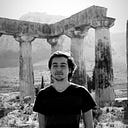Reality is a strange loop and you don’t know it.
This is a basic concept, yet it is a deep one.
Strange loops were first introduced by Douglas Hofstadter, a well-known cognitive-science professor.
Hofstadter devoted his life to study paradoxes of life and the parallels between music, mathematics and philosophy.
His research focus in the study of “I”. And the books he wrote are magically complex, with lots of logical demonstrations and concepts beyond simple entertainment.
But for those with the grit to read, I express my opinion on how great those books are.
What is a Strange Loop?
Strange loop is a system which the end is the same as the start.
It does not matter the direction of the movement, it is eventually going to arise at the beginning.
one finds oneself back where one started.
There are examples of strange loops everywhere around life. Many of E. C. Escher works explore this concept. You may have seen a few.
This is a powerful abstract concept, but when analyzed from different perspectives, it is a key to many doors of understanding.
Strange loops may be directed associated with the idea of paradox. The relation between one and the other is not indivisible, rather, it is a form that changes according to the recipient.
You may have to imagine a little bit, because in the 3-dimensional world, the concept of strange loop is impossible.
The laws of energy are one of reasons that a strange loop is not able to exist. Like a perpetual-motion machine, strange loops are theoretical ideas that may be used to explain complex concepts using analogies.
Douglas Hofstadter use it to explain the sense of identity, the self.
And his theories form curious scenarios of validation.
Using this notion to define our identity:
According to this view, the psychological “I” is a narrative fiction.
Something created by our brain, only from intake of symbolic information, and we have the ability to change stories, using data.
He says that the world is not a physical reality, but rather, a structure of information in which everything can be reduced to a list of yes or no questions. Bits.
This all may form the physical characteristics that we observe.
In this view, the world is not a static one, it is ultra fluid.
It is formed in our brains, the responsible organ for inputing information using the 5 senses and then process it all, creating an image of what is happening in the present.
The consequence is that perception (mind) is a interpretation of unique patterns of activity in our nervous systems.
This suggests that the notion of things is to the observer, previous concepts held in the brain. It is a continuous process of harmonization and detachment. Symbolic speaking.
More examples of a Strange Loop:
An object that has no ground.
It is existence itself.
It is free from the contrast between two.
We build our identity trough social relations. Art shows that it is important to keep the beauty of things in mind, but politics shows that our society influences our behaviors.
We should approach life as instructors approach kids.
Orienting and encouraging our actions. It becomes easy to develop the skills and focus needed to face everyday situations.
Every place is higher than the all previous steps.
Every place is also lower than all the previous ones.
It is harmony, equilibrium.
#Day 28
#100DayWrittingProject
